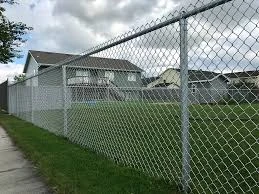Utility Pole Anchors Ensuring Stability and Safety in Electrical Infrastructure
Utility poles play a crucial role in our daily lives, serving as the backbone of electrical distribution systems. These towering structures are responsible for carrying power lines and often support communication cables as well. However, the stability of these poles depends significantly on the use of utility pole anchors, a critical component in ensuring that the entire system functions safely and reliably.
Utility pole anchors are devices used to secure utility poles to the ground, preventing them from leaning or falling over due to environmental forces such as wind, rain, or soil erosion. They are particularly important in areas prone to extreme weather conditions, which can put additional stress on utility poles. Without adequate anchoring, poles can shift or collapse, leading to power outages, hazardous situations, and potential damage to property and infrastructure.
There are several types of anchors used in the utility pole industry, each designed for specific soil conditions and pole applications. One common type is the helical anchor, which consists of a steel shaft with helical plates that screw into the ground. This type of anchor is particularly effective in providing strong resistance against lateral forces, making it ideal for areas with loose or unstable soil. Another type is the deadman anchor, which involves a horizontal component buried in the ground, connected to the utility pole with a tensioned cable. This design spreads the load over a larger area and helps to keep the pole upright.
utility pole anchors

The installation process of utility pole anchors is critical to their effectiveness. It often requires specialized equipment and trained professionals to ensure that anchors are properly installed at the correct depth and orientation. The depth of the anchor is particularly important, as it needs to reach a stable layer of soil to provide the necessary support. Regular inspections and maintenance are also essential to ensure that the anchors remain secure over time, especially after severe weather events that could cause shifting or damage.
Another significant aspect of utility pole anchors is their environmental impact. As the push for more sustainable and environmentally-friendly practices grows, utility companies are looking for ways to minimize their footprint. Innovative solutions, such as using recycled materials for anchors or implementing less invasive installation techniques, are being explored. This not only helps in reducing environmental disruption but also in lowering costs associated with anchor production and installation.
Utility pole anchors also play an essential role in meeting regulatory standards and safety requirements. Many regions have strict guidelines governing the installation and maintenance of utility poles and their accessories. Compliance with these regulations ensures that utility companies can provide safe and reliable service to their customers while minimizing the risk of accidents and outages.
In conclusion, utility pole anchors are a vital part of electrical infrastructure that ensures the stability and safety of power transmission systems. These anchors prevent poles from leaning or collapsing, especially in challenging weather conditions, and they must be correctly installed and maintained to perform effectively. As we continue to rely on electricity for our daily lives, it’s imperative to recognize the importance of utility pole anchors in maintaining a robust and resilient power distribution network. Through innovative practices and adherence to safety standards, we can ensure that our utilities remain reliable while also protecting the environment, resulting in a safer and more sustainable future for all.
















